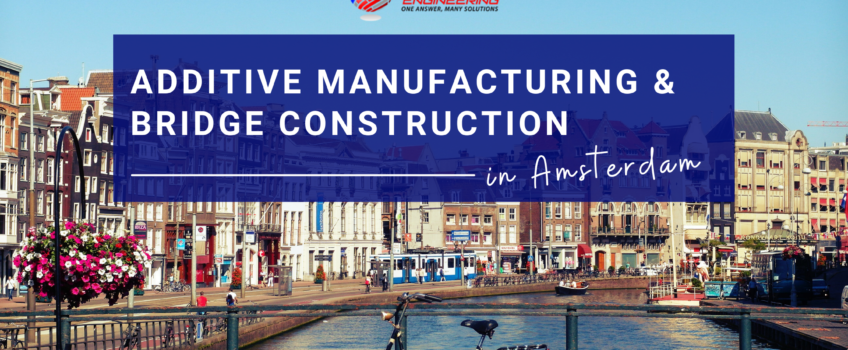
Additive Manufacturing In Bridge Construction
Amsterdam is now home to the world’s first-ever 3d printed bridge constructed by four robots in just six months. The additive manufacturing project was a collaborative effort between MX3D, a Dutch start-up focusing on 3D metal printing, researchers at Imperial College London and The Alan Turing Institute.
With such a powerful combination of stakeholders, it’s bound to yield tremendous success now and in the future. The plan is to keep the 3D-printed bridge in place for two years while they renovate the original bridge.
A Test Case For Steel In Additive Manufacturing
Whilst most 3D printing projects use proprietary inks or starting material, regardless of application, this bridge is different. It was actually a test case to see how steel material would work in additive manufacturing.
The construction project was initiated in 2015 using multi-axis torch-wielding robots. These robot welders would heat the steel to 2,732°F (1,500°C) and then construct the nearly 40-foot-long bridge (12-metre) layer by layer using close to 10,000 pounds (4,500 kg) of stainless steel.
According to engineering company MX3D, these robots “can draw steel structures in 3D to print a (pedestrian) bridge over water in the centre of Amsterdam.” They would essentially ‘walk’ across the canal by sliding along the bridge edges.
As part of the additive manufacturing project, they used bespoke Autodesk software which will be a research project in itself.
Building A Bridge Using Additive Manufacturing
In a showcase of technology and forward-thinking, the bridge has multiple sensors for data collection. It will record information about the strain and vibrations from people using it under various weather conditions.
They will then feed the results into a ‘digital twin’ of the bridge to help researchers gain a better understanding of how 3D-printed steel behaves over time. This data will help identify areas that might need maintenance or modifications which will contribute immensely when undertaking larger construction projects.
Project leader, Professor Mark Gilorami from the Turing Institute said: “3D printing is poised to become a major technology in engineering and we need to develop appropriate approaches for testing and monitoring to realize its full potential”.
“Printing” Outside The Box
By using the latest technology and bespoke software, the idea is that the bridge will promote additive manufacturing on construction sites. If everything goes according to plan, 3D printing could become a bigger norm in the construction sector. It could even remove the need for scaffolding as the robotic arms use the very structure they print as support.
Tim Geurtjens, CTO MX3D said: “What distinguishes our technology from traditional 3D printing methods is that we work according to the ‘Printing Outside the box’ principle. By printing with 6-axis industrial robots, we are no longer limited to a square box in which everything happens.”
The bridge designer, Joris Laarman strongly believes in the future of digital manufacturing and local production, calling it “a new form of craftsmanship.” He continued by stating: “This bridge can show how 3D printing has finally entered the world of large-scale functional objects and sustainable materials.”
Final Thoughts
Considering robots built the bridge, it’s fitting that a robot also officially opened it. With the press of a button, Dutch Queen Maxima activated a robotic arm equipped with a pair of scissors to cut the ribbon and opened the bridge to pedestrians and cyclists.
Imperial co-contributor Professor Leroy Gardner of the Department of Civil and Environmental Engineering said in a press release: “A 3D-printed metal structure large and strong enough to handle pedestrian traffic has never been constructed before. We have tested and simulated the structure and its components throughout the printing process and upon its completion, and it’s fantastic to see it finally open to the public.”
For more information about what we do, visit our website and please read our blog for all the latest in technology, engineering and manufacturing. We work with customers across various sectors including construction, oil and gas, automotive, aerospace, defence and rail.


 Mail:
Mail: 



